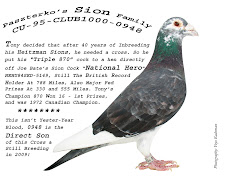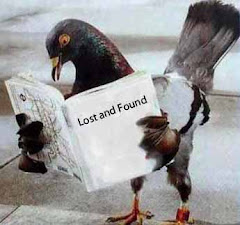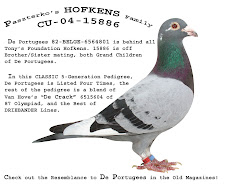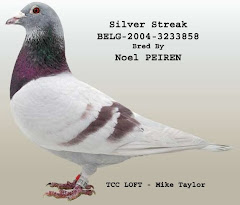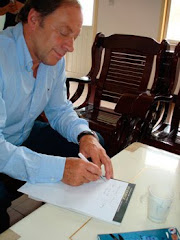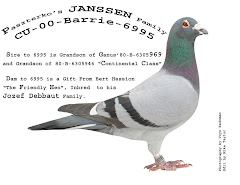July 25, 2010
Rural Janesville man’s unusual hobby a competitive sport
By Dick Hagen
The Land Staff Writer The Mankato Free Press Sun Jul 25, 2010, 10:41 PM CDT
JANESVILLE — Some play golf. Some plant potatoes. Some collect old tractors. And then there’s Chuck Stensrud of rural Janesville. He flies racing pigeons.
Stensrud and his special birds literally travel middle America for special pigeon racing events. After the birds are liberated, Stensrud drives back to Janesville. His racing pigeons, however, fly home — and usually get there before he does.
Rare birds? Not really. The racing homer was developed in Europe in the 1800s. It is a blend of five different breeds of domestic pigeons. Originally they were bred to carry messages and were used by the military as recently as World War II.
Competitive sport
Today they are raced for pleasure. Stensrud belongs to a club called Gopher State Racers. Two national organizations of Racing Pigeon clubs exist in the United States. The organization that Gopher State Racers is a part of consists of about 700 clubs. Clubs are organized along geographic boundaries — the intent for club members to live in proximity to each other so there is less racing advantage due to distance or prevailing winds within a club.
This unusual hobby is indeed a competitive sport. “We fly in competition within our club plus there are two other clubs in our combine which we also compete against. We compete with other clubs at the state level and at the Midwest level,” Stensrud said. He said there are probably a dozen racing pigeon clubs in Minnesota.
On a quiet Saturday afternoon this spring, he, his pickup and three baskets, each with eight to 12 birds, were parked along a country road near St. Clair. “This is the first time out this year for my birds so this is just a warm-up flight,” Stensrud said. “We’re only about eight to 10 miles from my house.”
Baby birds must be “settled” to their loft upon leaving the nest. The first thing they have to learn is how to get back into the loft. As they get stronger, they make their “maiden flight” around the yard and back to the loft. With each passing day, they fly farther until pretty soon they are “traveling” for up to an hour at a time and will venture several miles into the countryside.
Homing instinct
Their homing instinct brings them to within 12 to 15 miles of the loft, but from there on they must know the area. Almost everyone breeds and raises their own birds, and each bird has an imprint of its home loft.
“They always try to come back to the loft,” Stensrud said. “I had a bird that I had sold eight years previously that got loose from its owner and came back to my loft. That was only about 40 miles.”
Stensrud said he has birds that have flown 500 miles on a single race day. A race is from a given liberation point to the bird’s home loft. The race winner is determined by speed, essentially yards per minute.
“We know the longitude and latitude of the release point, and the same information for the home loft. We compute the distance down to one-tenth of a yard. We know the release time, the arrival time at home loft, so we compute the elapsed time. From that we figure the speed in yards per minute and the fastest bird wins.”
An electronic chip fastened to a pigeon’s leg registers the arrival time of each racing pigeon back in its home loft. Racing pigeons average about 35 miles an hour, but they have been clocked as high as 75 and 80 mph. “I’ve had pigeons released in Rapid City, S.D., at 6:30 in the morning and they were home at 4:30 that afternoon,” Stensrud said.
What is this “homing instinct” of the carrier pigeon? Scientists have experimented with the birds and theorize they can sense the earth’s magnetic fields. They home better on sunny days, but sunspots have an adverse effect upon returns.
Old birds, young birds
There are two seasons each year: Old Birds and Young Birds. The old bird season is for birds hatched in previous years, their races held during May and June. Young birds are those hatched during the current year, and their races are held in August and September. With younger birds, only a couple are released and they are taken shorter distances from the home loft.
During “spring training” for his birds, each time Stensrud takes a bird out he doubles the distance. On this day it was only about 10 miles back to the loft, but the first race of the 2010 season is 100 miles. Birds, just like marathon runners, need to be in shape.
How did Stensrud get into this unique hobby?
“I first read about it as a boy when racing pigeons were used as carrier pigeons for relaying messages,” he said. “So I caught some barn pigeons and made pets out of them. After high school I bought some homing pigeons. I flew my first race in 1970 and I’ve been racing ever since.”
He doesn’t know precise “flight patterns” of his birds but estimates they’re flying at 300 to 400 feet. That depends, however, upon winds on any given day. When the birds are flying into a headwind, they will fly low to the ground, sometimes so low that they have to go up and over fence lines. He doesn’t sell “breeding stock,” but he does raise a few baby pigeons as gifts to folks who want to get into the sport.
He mixes his own feed, with different rations for different times of the year. Corn, wheat, millet, milo, safflower, sunflower seeds and a couple of different kinds of peas are part of the formula.
“It’s the only hobby I’ve ever had, and it truly is a great sport. In Europe, especially Holland and Belgium, racing pigeons is as popular as baseball is in the United States. Yep, give it a try and it grows on you.”
The Land magazine is a sister publication to The Free Press and is distributed to farmers and rural dwellers throughout Minnesota
Read more ...
Past sports promotions
Pigeon racing







